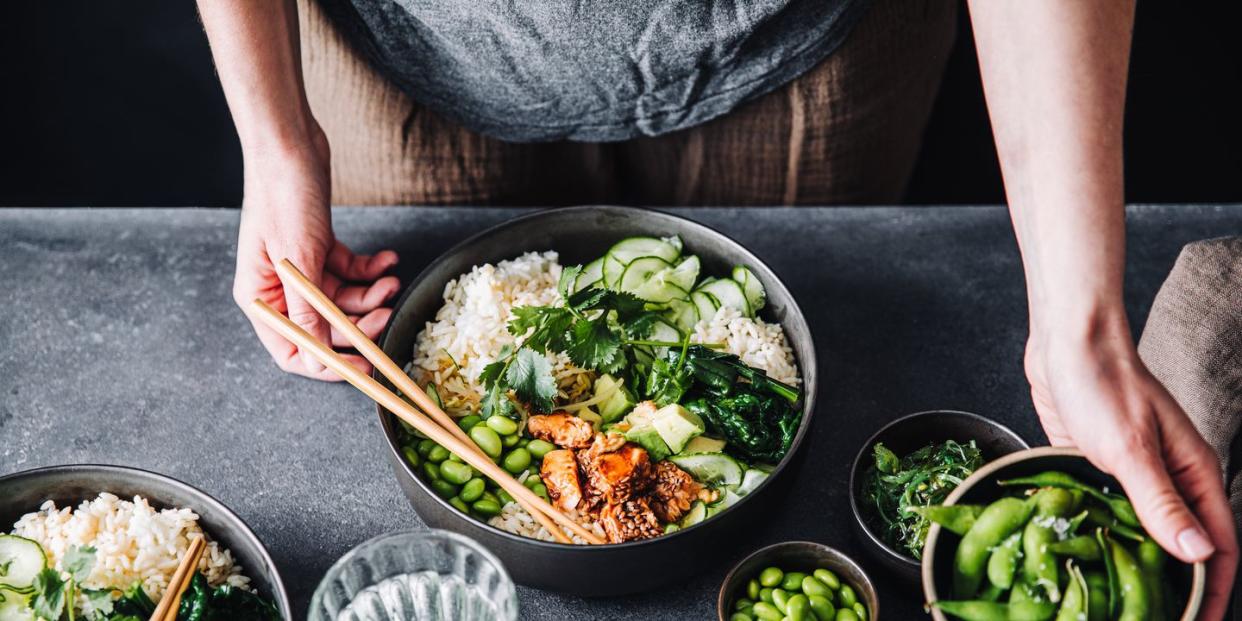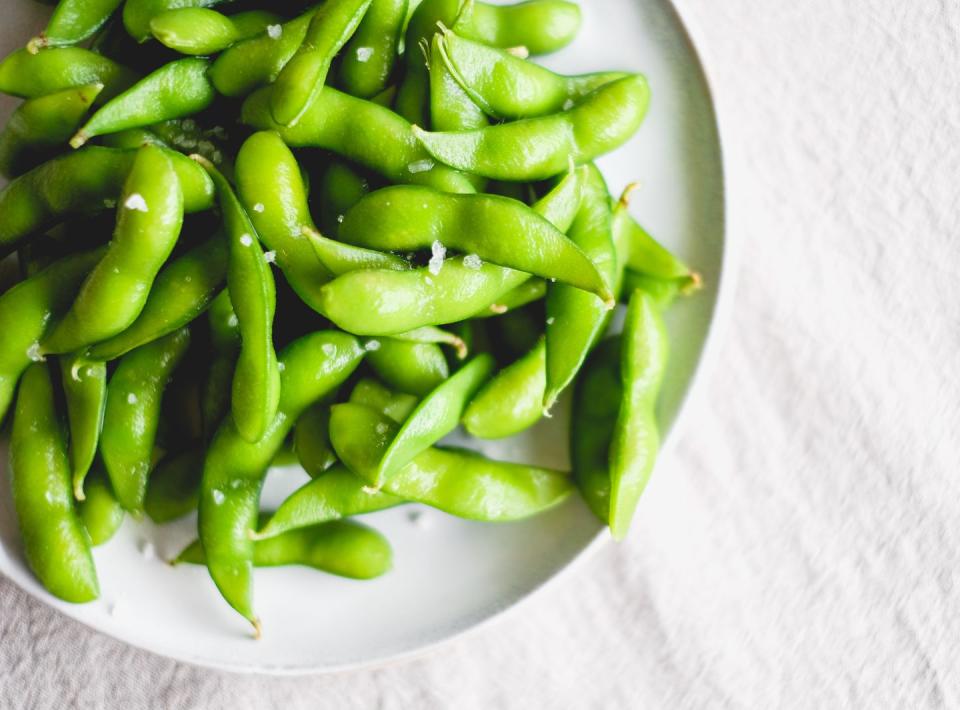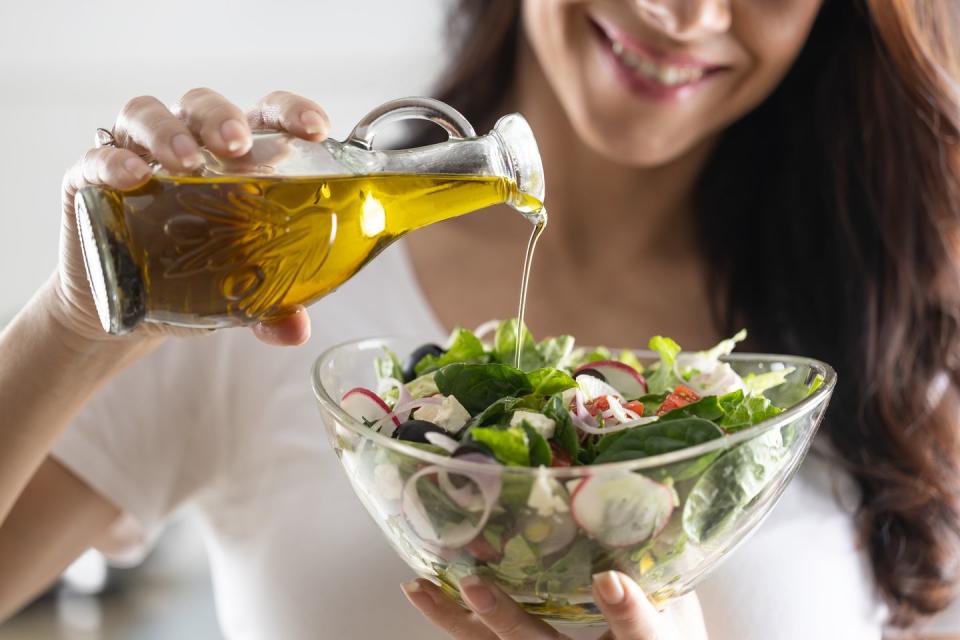Can tweaking your diet really help to manage period pain?

For Olivia, life seemed to revolve around a never-ending cycle of stabbing, steering period cramps. Each month was the same. She’d lie in the fetal position, sobbing, clutching at her lower abdomen. And those were the days when she could work from home (aka work from bed) without needing to take a hot water bottle to the office to help numb the pain. ‘They leave me on the floor,’ she told WH.
Sick of constantly popping paracetamol as a way to cope with the pain, she wondered if adjusting her diet – and syncing it with her cycle – could help her to surf these hormonal waves?
And, she’s not alone. A 2023 survey from the Wellbeing of Women charity, who polled 3,000 women and girls between the ages of 16 and 40, found that 96% of them had experienced period pain, with 49% saying their bleeding was severe.
It begs the question – can food, and our diet, really help?
Meet the expert: Rhiannon Lambert is a registered nutritionist, Sunday Times bestseller and founder of Rhitrition & Rhitrition Plus. Her latest book, The Science of Plant-Based Nutrition, (£20, DK) is out today.
How can the food we eat help to alleviate period cramps?
‘During menstruation, many women experience abdominal cramps, also known as dysmenorrhea, which can be uncomfortable and painful,’ explains registered nutritionist Rhiannon Lambert.
There is, however, some evidence to suggest that the food we eat may have a positive influence on – and even alleviate – this pain. ‘Increasing the intake of magnesium-rich foods, such as almonds, and foods rich in omega-3s, such as walnuts, may reduce the intensity of pain experienced during the menstrual cycle,’ Lambert says.
In fact, magnesium – also found in dark chocolate and pumpkin seeds – pulls double duty in promoting better sleep as well as reducing muscle cramping in the uterus and bowels.
‘Similarly, vitamins D and E are known to have anti-inflammatory properties. Some studies have found that the increase in consumption of these two vitamins could reduce the pain associated with menstruation.’
Did you know? When iron levels are low, cramps can be worse, since iron helps red blood cells deliver oxygen to your muscles.
What foods should we eat more of during our period?
It’s important to replenish the nutrients you lose when bleeding – these are the foods you should reach for when you see red...

1. Edamame
‘The body loses iron during the menstrual cycle, therefore consuming foods such as edamame beans (as well as dark, leafy greens) can help to boost your iron levels,’ says Lambert. ‘Just 160g of edamame beans contains 3.5mg of iron.’
2. Whole grains
‘There has been some research to suggest that whole grains, such as whole grain bread for example, could be linked with reduced physical, mood and behavioural symptoms associated with premenstrual syndrome,’ says Lambert.

3. Olive oil
‘Incorporating olive oil into your daily diet has been associated with lighter bleeding during the menstrual cycle and consuming ginger has been shown to have anti-inflammatory and pain-relieving properties,’ she adds.
4. Vitamin D
‘Finally, increasing vitamin D consumption through foods such as mushrooms has been associated with both reduced premenstrual and menstrual symptoms,’ says Lambert.
‘However, it’s important to note that the most effectively absorbed form of vitamin D (D3) in the diet is found in oily fish which some people choose not to consume.
‘Additionally, the majority of our vitamin D is derived from the sun’s ultraviolet (UV) rays hitting our skin when spending time outside. Therefore, in the UK, a high-quality vitamin D supplement is recommended by the NHS for all adults from October to April when the UV rays are not at their strongest.’
Can a plant-based diet help alleviate menstrual symptoms?
So what if you’re not a fan of seafood? What plant-based sources can help with period cramps?
‘Choosing a diet that is mostly plant-based, like the Mediterranean Diet has been shown to alleviate different menstrual symptoms as well as some disorders,’ says Lambert.
‘The Mediterranean Diet has anti-inflammatory properties and has been associated with reduced premenstrual symptoms, as well as increased prevention of premenstrual syndrome.
‘Research shows that low adherence to a Mediterranean Diet increases the risk of premenstrual syndrome. Additionally, although research is limited when it comes to assessing plant-based diets and reduced menstrual symptoms, some evidence suggests that lighter bleeding may be observed.
‘There have been some small studies that suggest that a plant-based diet may help those who suffer from polycystic ovary syndrome,’ she continues. ‘This disorder increases the risk of insulin resistance and type 2 diabetes but the Mediterranean Diet, for example, helps to manage blood glucose levels, reducing the risk of developing diabetes.
‘Finally, it is important to highlight that a plant-based diet may alleviate symptoms experienced during the menopause. Soya products, such as edamame beans, tofu or tempeh, for example, may reduce hot flushes and night sweats.’
What foods should you try to avoid on your period?
Sadly, that coffee, chocolate and alcohol you’re turning to for a lift in mood, can actually have the opposite effect since these drinks often lead to dehydration, and sugary foods can fuel inflammation.
‘There is evidence to show that consuming highly processed “snack” foods high in sugar, salt, and fat increases the risk of painful periods in young women,’ says Lambert – who adds there is also some evidence to suggest that ‘consuming large amounts of meat during the menstrual cycle increases inflammation. While eating ham on a weekly basis was associated with heavier bleeding.’
Heavy periods are common, but they’re not normal. If your period pain persists, visit your GP for a check-up
Cut through the noise and get practical, expert advice, home workouts, easy nutrition and more direct to your inbox. Sign up to the WOMEN'S HEALTH NEWSLETTER
More in Nutrition
Thinking about starting the 5:2 diet? Here’s your need-to-know
The egg diet is going viral, but it isn’t the health fix you might think it is
You Might Also Like


